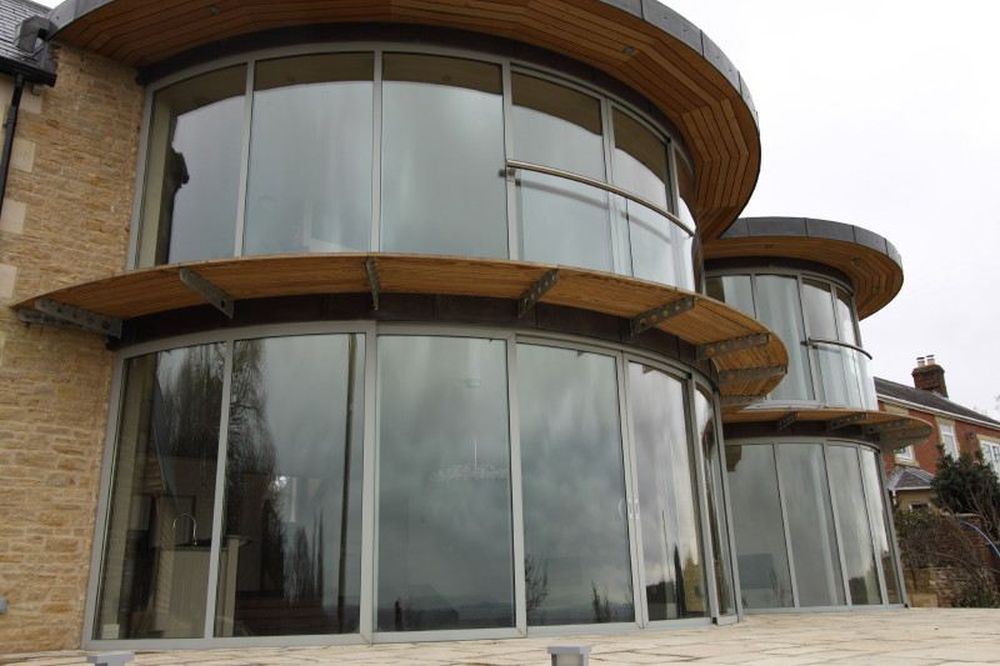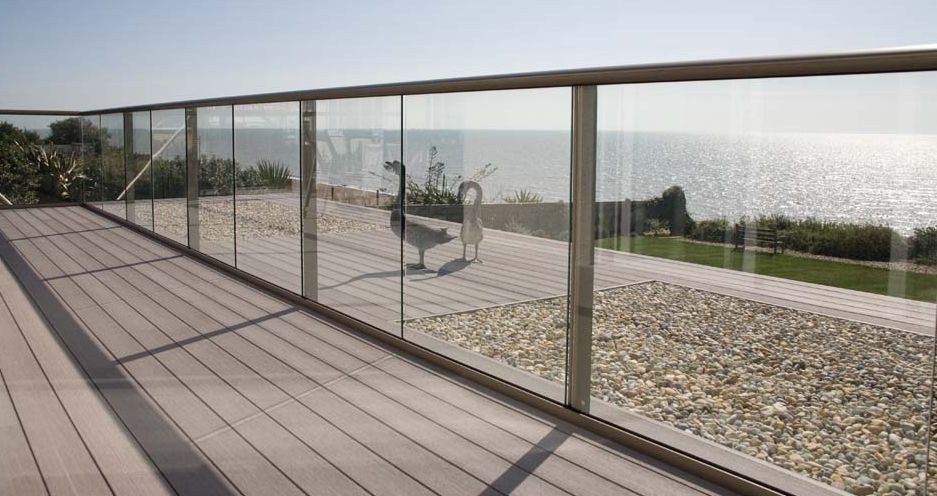Zero Cleaning Glass – An Expert Explains
Glass Balustrades | Juliet Balconies | Galleries | Articles | Case Studies
Zero cleaning glass or self-cleaning glass sounds like an attractive proposition to make our busy lives easier. But what is it and how does it work? Here at Balconette, we have a lot of experience in working with glass and below share some of the truths (and dispel the myths) about the options on the market.
Is there such a thing as zero cleaning glass?
In short, the answer to that is ‘no’. While the idea of glass that would require no cleaning at all sounds very appealing, in reality all types of glass require cleaning to a greater or lesser extent to keep the surface clear of dirt, grime, dust and calcium deposits from rainwater.
Over time, build-up of these deposits becomes embedded in the porous, microscopically uneven surface of the glass. This leads to a deterioration in its clarity and a dull, opaque appearance.
If left for a long time, this contamination becomes so deeply ingrained that it cannot be completely removed, even with the strongest cleaning agents.
What is self-cleaning glass?
The terms ‘zero cleaning glass’ or ‘self-cleaning glass’ are somewhat misleading as all types of self-cleaning glass will require cleaning and maintenance to keep them looking their best.
Two main types of self-cleaning glass are available on the market, each taking a different approach to the same problem. A protective coating applied to the surface of the glass acts to either repel water faster or works to break down organic dirt on the glass.
Both techniques help to reduce the amount of dirt remaining on the glass, thereby reducing the amount of cleaning required. However, the glass will still require cleaning, albeit less often.
More accurately, self-cleaning glass should be described as ‘lower maintenance’ to reflect its characteristics and create true expectations of the product among consumers.
What types of self-cleaning glass are available?
Essentially, the two categories can be divided into:
- Glass coated with a Hydrophilic layer that uses photocatalytic decomposition.
- Glass coated with a Hydrophobic layer that repels water causing it to run off faster.
Hydrophilic – this is glass with a film of titanium dioxide coating. The surface of the glass works in two stages. Firstly, the photocatalytic stage uses ultraviolet light to break down organic dirt on the glass, making the surface ‘hydrophilic’ and causing the water to spread out like a thin film. During the next stage, rain or hosing down the glass washes away the dirt leaving almost no streaks.
This coating has a long lifespan and under the right conditions, the cleaning cycle required will be reduced. However, it cannot tackle certain deposits, such as inorganic dirt or thick non-transparent accumulations. Specialist glazing is required as this type of glass reacts negatively with silicone.
Hydrophobic – a silica-based coating is applied to the glass, evening out the microscopic ‘peaks and troughs’ in the surface to create a smooth non-stick surface that repels water quickly. Spherical water droplets (similar to those on a well-polished car) attract dirt particles, taking these away as the water runs off.
A hydrophobic coating works on organic and inorganic dirt alike. It also reduces the need for any chemical cleaning agents as the dirt washes off easily. Although it has a shorter lifespan of up to 10 years, it can be reapplied on site if necessary and is about half the cost of hydrophilic-type glass.
Is self-cleaning glass suitable for my glass balustrade?
Yes, absolutely. Installing self-cleaning glass panels in your Balconette glass balustrade or Juliet balcony offers many advantages, protecting the glass from the elements and helping it to stay looking cleaner for longer. This reduces the number of cleaning cycles, leaving you more time to enjoy the clear views from your balcony.
Here at Balconette, we offer our own proprietary BalcoNano® self-cleaning glass coating. This can be specified when ordering and the coating is factory applied before delivery. Or it is available in sachets for application on site.
How can I add self-cleaning glass to my balustrade?
Simply give us a call with the size of your balustrade and we can arrange delivery of the required number of sachets to coat the glass. Full instructions are supplied.











